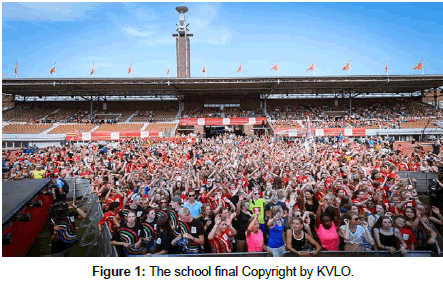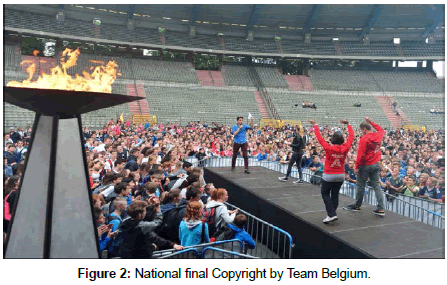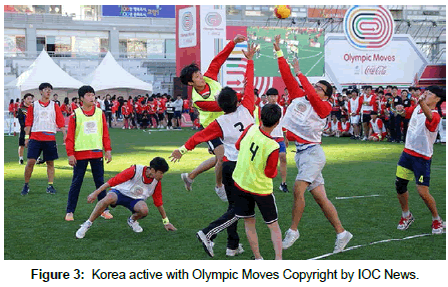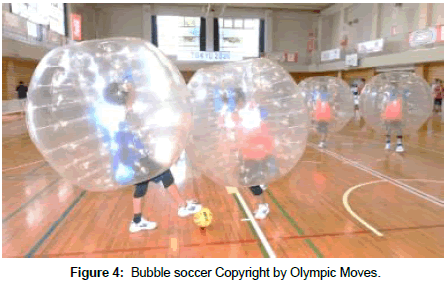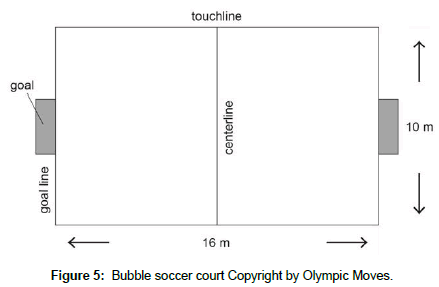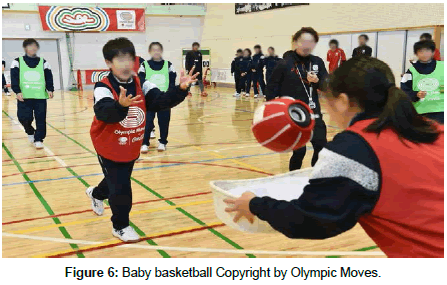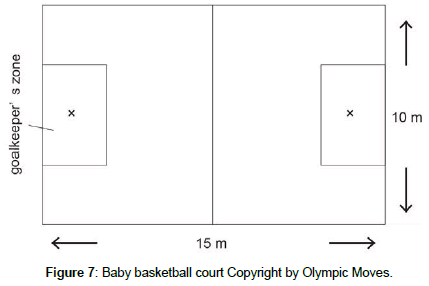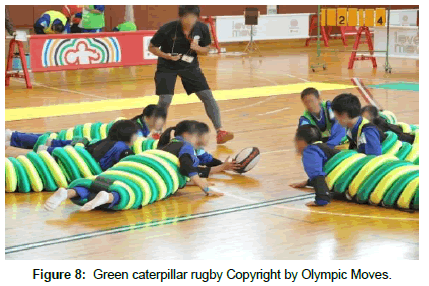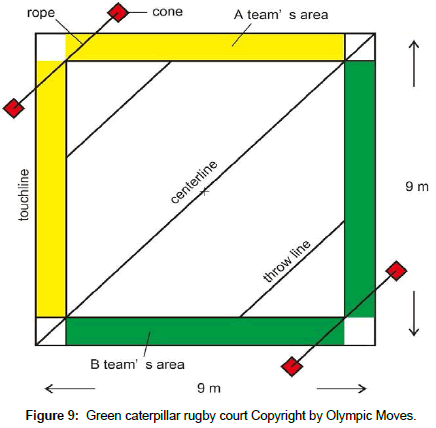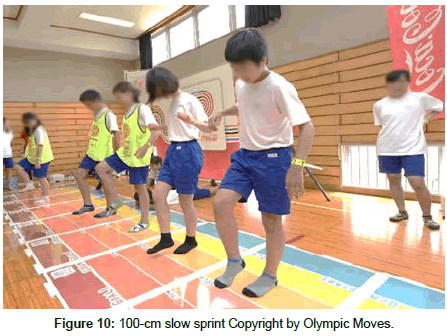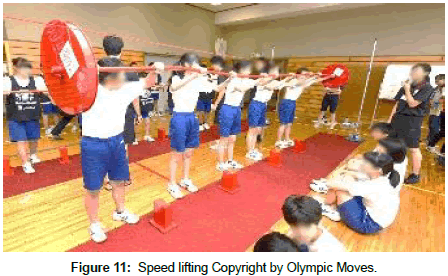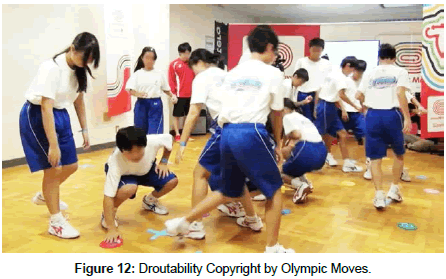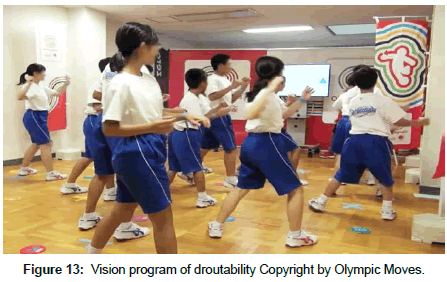Research Article, J Athl Enhanc Vol: 7 Issue: 4
The Olympic Moves Program, Around the World and In Japan: Current Status and Future Opportunities
Tatsuo Yasumitsu1*, Yasuhiro Kudo2 and Haruo Nogawa2
2School of Health and Sports Science Juntendo University, Inzai-shi, Chiba, Japan
*Corresponding Author : Tatsuo Yasumitsu
4-6-1 Hyakunin-cho, Shinjuku-ku, Tokyo, 169-0073, PCY Ltd, Chiba, 270-1695, Japan
Tel: +81-80-1348-0808
E-mail: sahara0808@yahoo.co.jp
Received: September 10, 2018 Accepted: October 08, 2018 Published: October 16, 2018
Citation: Yasumitsu T, Kudo Y, Nogawa H (2018) The Olympic Moves Program, Around the World and In Japan: Current Status and Future Opportunities. J Athl Enhanc 7:4. doi: 10.4172/2324-9080.1000303
Abstract
As we approach the Tokyo Olympics and Paralympics to be held in the year 2020, many Olympic movements are underway in Japan. Although the Olympic Moves Project was launched in Holland as an Olympic movement in 2003 and has been underway in Japan from 2015, there have been only a few studies that have reported on the actual state of activities on projects in countries around the world and the present state of affairs in Japan. This study describes the content of Olympic Moves projects underway in various countries, along with the status of Olympic Moves in Japan and how the existing program can be strengthened. Holland, Belgium, and South Korea have each held large-scale sports events in their Olympic Moves program, with teenagers from all over the country coming together at famous sports stadiums. In contrast, the events in Japan have been recreational in nature and limited in scope to individual middle schools. We hope that his aspect of the Olympic Movement will continue at many middle schools as a positive, lasting part of Japan's Olympic legacy.
Keywords: Olympic moves; Inadequate exercise habits; Middle school students; Olympic movement; Olympic legacy
Introduction
As we approach the 2020 Tokyo Olympics and Paralympics, many Olympic-related activities are underway in Japan. The Tokyo Organizing Committee for the Olympic and Paralympic Games (TOCOPG) has formulated an “Action and Legacy Plan 2016” and is implementing a wide range of actions in preparation for 2020. This plan is driven by a desire to achieve successes that will extend beyond the Games themselves, leaving behind a wide range of positive legacies-not limited to the field of sports-for Japan and the whole world.
TOCOPG has decided to promote comprehensive actions from the initial planning stage onward, engaging all stakeholders under each of five pillars: “Sports and Health,” “Urban Development and Sustainability,” “Culture and Education,” “Economy and Technology,” and “Dissemination of Recovery and the Concept of All Japan to the World” [1]. The International Olympic Committee (IOC) [2] indicates that an Olympic legacy should have numerous tangible and intangible aspects, from short-term economic benefits to long-term sustainable development. Girginov [3] indicates that the emphasis on a long-term legacy is indispensable to maintain the relevance of the games to the modern world and to achieve desired social reform goals.
In addition, the IOC [4] has indicated its desire that the Olympic Movement will help to educate young people and contribute to creating a better and more peaceful world through sports, in accordance with Olympism and its values. Olympic education is thus a vital tool for accomplishing the movement's objectives [5]. Consistent with this vision, the Japan Sports Agency (established in 2015) has declared that Olympic and Paralympic education has many merits beyond merely increasing interest in the Games themselves, such as fostering a better understanding of the value of sports, cultivating general global awareness, and increasing appreciation for foreign cultures and the idea of an inclusive society [6].
In Japan, the implementation of Olympic education is relying heavily on coordination among prefectures, municipalities, universities, and athletic associations. Starting in 2016, Olympic and Paralympic education programs were implemented at all public schools in the Tokyo metropolitan area, with each school aiming to provide about 35 h of instruction per year. In support of this effort, reference materials have been created and distributed to teachers, and instructor training has been expanded. In addition to deploying its own education program, following the conclusion of the Rio Olympics, TOCOPG established a system for certifying initiatives that are based on the Tokyo 2020 Games vision. Certification allows schools that have implemented Olympic and Paralympic education to display a logo containing the emblem for the Tokyo Games. In addition, sponsoring companies, universities, and regional nonprofit organizations are also promoting educational programs [6].
One distinctive component of this growing emphasis on Olympic education is Olympic Moves, originally launched in Holland in 2003 and first introduced in Japan in 2015. Only a few studies have reported on Olympic Moves around the world or on the present state of affairs in Japan. This paper seeks to advance our understanding of the Olympic Moves by conducting a systematic review and analysis of the empirical research. Also this study describes the content of Olympic Moves projects underway in various countries, along with the status of Olympic Moves in Japan and how the existing program can be strengthened.
Olympic Moves in Holland and Other Countries
This study is based on the data published by the IOC, Japanese Olympic Committee (JOC), and TOCOPG. Informed consent was obtained from all individual participants included in the Olympic Moves program. Concerned about declining birth rates and diminishing interest in sports and exercise among young people around the world, the IOC is developing global programs in conjunction with some of its leading sponsors, such as the Coca-Cola Company [7]. Olympic Moves is one of those programs. Created by the IOC and Coca-Cola in 2003, it started in Holland and has subsequently expanded to Belgium, South Korea, and Japan [8].
In Holland, students between the ages of 12 and 19 from more than 380 schools-nearly half the country's secondary schools, spanning more than 75 districts-have participated in the project. It consists of four phases: recruitment, selection, regional finals, and the School Final (Figure 1). Activities have included track and field, badminton, floorball, handball, hockey, basketball, mini-trampoline, softball, streetball, street dancing, tennis, ultimate Frisbee, cross-country, soccer, volleyball, and futsal. These activities take place throughout the year. In 2017, roughly 36,000 Dutch students participated [9].
In Belgium, participation consisted of 250 teams of first- and second-year middle-school students (age 12 to 14). That program also extends over the course of a year and consists of three phases: sports initiatives, regional qualifiers, and national finals (Figure 2). The sports offered include track and field, softball, and soccer. In 2017, there were over 6,000 participants [10].
South Korea's program, aimed at teenage students, features a variety of sports, including handball and basketball (Figure 3). In 2015, over 1,600 students from 42 Korean schools participated in an interactive event related to preparations for the 2018 Winter Olympics in PyeongChang [11].
Olympic Moves in Japan
Coca-Cola has teamed with the TOCOPG and the JOC to implement Olympic Moves in Japan. Along with the primary goal of addressing inadequate exercise habits among young people, Japan's program has the related goals of arousing enthusiasm prior to the 2020 Tokyo Olympics and supporting athletes who will be competing in the Games [12].
The Japanese Olympic Moves project began in 2015 and aims to create opportunities for all students aged 12 to 15 to engage in healthy exercise [8]. About 240 students from Shinchi-town Shoei Middle School in Fukushima Prefecture participated in the project's inaugural session in 2015; the second session took place at Higashikurume-city Minami Middle School in Tokyo with 245 participants.
Interestingly, Japan's program did not include any of the activities used in other countries' Olympic Moves programs. Instead of traditional competitive sports, it chose to offer activities often offered in school recreational programs: bubble soccer, baby basketball, green caterpillar rugby, 100 cm slow sprint, and speed lifting. At each participating location, participants were placed on teams of about 10 students each, with roughly 10 teams per school grade, competing against each other in pairs. Each activity lasted 15 min, which included the time required for preparation, the competition itself, and cleanup. All teams participated in each activity once and then moved to their next event. Olympic Moves staff explained and served as referees for each activity. To avoid adverse weather impact, all activities took place indoors in classrooms and gymnasiums.
Bubble Soccer
For bubble soccer (Figure 4), participants from two teams put on large bubble suits and then play soccer on a court measuring 10 × 16 m (Figure 5). In Olympic Moves, the 15 available minutes are scheduled very tightly as follows: 2 min for equipment preparation, three periods of 3 min each with intermissions of 1.5 min, and 1 min for equipment cleanup. Four members of each team play at one time; player substitutions take place during intermissions.
Because players cannot use their hands while wearing bubble suits, there are no goalkeepers. At the kickoff, players line up on their own goal lines and then wait for the sound of the whistle, which signals them to scramble for the ball placed on the centerline. If the ball leaves the court or passes a goal line or touchline, a kick-in takes place. Kick-ins, corner kicks, and free kicks must be executed within 4 s or a penalty is assessed. Goals cannot be scored directly from a kickin. Other fouls include putting the ball in the cavity at the top of the bubble, hitting the ball with the bubble, intentionally colliding with another player, and kicking a bubble. The game is otherwise played according to the rules of futsal.
Baby Basketball
Baby basketball (Figure 6) uses a ball that contains a sensor; shaking the ball strongly, dribbling it, or throwing it hard activates the sensor and produces a sound like that of a crying baby. Two teams consisting of six players each-five field players and a goal player who holds the goal cradle-compete on a court measuring 10 × 15 m (Figure 7). In Olympic Moves, the game consists of two 6 min halves, with 1 min for preparation, 1 min of halftime, and 1 min for cleanup. Again, player substitutions occur at the intermission.
The match begins with a jump ball. Players handle the ball carefully while carrying it to the cradle held by their team's goalkeeper. If the ball begins to make noise, or if a player holds the ball longer than 3 s or walks more than three steps, the opposing team gains possession. Players may not directly hand the ball off to each other; such a direct handoff also causes the ball to be awarded to the other team. Members of the opposing team cannot enter a goalkeeper's zone. Placing the ball in the cradle while standing within the zone earns a team two points; tossing it into the cradle from outside the zone is worth three points. The goalkeeper must hold the cradle and is not allowed to leave the zone. In cases of rough play such as hitting the ball, the opposing team is granted a free throw. A successful free throw is worth one point.
Green Caterpillar Rugby
In green caterpillar rugby (Figure 8), players wear green caterpillar suits and are not allowed to use their legs. Participants from two teams with four players each compete on a court measuring 9 × 9 m (Figure 9). Four minutes are reserved for putting the suits on and 1.5 min for taking them off at the end, leaving time for three periods of 2.5 min each and 1 min breaks. Player substitutions occur during intermissions.
At the start of the game, one team waits at the throwing line, while the other team rolls the ball toward the centerline. Players move around the court by crawling on their stomachs or rolling their bodies. If a player rolls the ball past the touchline, the referee hands it to the opposing team and play resumes. Pinning the ball down within a marked-off area shaped like an L is worth two points; passing the ball between teammates at least three times and then rolling it from behind the throw line and making it travel underneath a rope suspended between two cones is worth three points. Rolling the ball in front of oneself is allowed, but the ball must always remain on the ground except during a backward pass, for which both the passer and the receiver can sit up. If a player in possession of the ball is touched, he or she must pass the ball. Players may touch members of the opposing team only on the back or arms or below the knees. Once a team's players have been touched five times, they switch to defense and the opposing team takes control of the ball. Hazardous actions such as colliding with other players are prohibited. Players who engage in dangerous conduct such as using their legs are penalized by having to remain in the spot where the infraction occurred until one round of play is completed. Fighting over the ball is not allowed; possession is awarded to the player who first touched it as judged by the referee.
Slow Sprint
The objective of the 100 cm slow sprint is to travel a distance of 100 cm as slowly as possible. All players from both teams compete together on a court with blocks marking off four 25 cm sections (Figure 10). Like baby basketball, this activity includes two 6 min halves with 1 min each for preparation and cleanup and 1 min for halftime substitutions.
During the match, players must continue moving at all times, trying to maintain their balance while holding one foot off the ground. A match begins with players toeing the start line; at the signal, they all raise one leg at the same time. A goal is scored when a player's toes cross the goal line and land on the ground. While a player's raised foot is moving, it must be kept in front of the one planted on the ground. The player then brings the heel of the raised foot directly down to meet the toes of the rear foot. At the moment when the sole of the front foot touches the ground, the player must lift the other foot. That foot is then extended directly in front of what is now the rear foot. If the referee calls a foul for violating the walking rules, the offending player must advance to the block that is one position in front of the block where the foul was committed. If after the foul the player does not quickly begin moving again or does not have both feet in place before doing so, he or she must advance one more block (for a total of two blocks) and then start again. Other actions considered fouls are failing to move, stumbling, falling, placing one's hands on the ground, not extending one's foot straight ahead, placing both feet on the ground except when switching legs, and repeatedly raising or lowering the same leg while it is elevated.
Speed Lifting
Speed lifting is played by two alternating teams of five members, using an extremely light barbell that is divided into five equal segments connected by magnets (Figure 11). Of the 15 min available, four are reserved for practice, after which each of the four groups of players (two groups on each team) participates in lifting for 1.5 min. Before each group's turn, 1 min is allotted to set the barbell at the proper height.
During their turn, each group of five members seeks to raise and lower the barbell as many times as possible while synchronizing their timing as a group. An attempt starts with the plates on the ends of the barbell resting on the floor. Lifting the barbell to a certain height (which varies by team and is designated by the referee) and then lowering it until both plates touch the floor counts as one completed motion. One short whistle by the referee notifies a team when it has raised the barbell to the designated height, after which the team then lowers the barbell. If the five team members do not work together as a unit, the bar separates; if this happens-even in only a single location-the referee gives a long whistle to advise the players that they must lower the bar to the floor, reassemble it, and then start over.
Droutability
The Japanese version of Olympic Moves continued in 2016, with its third session including 256 students from Koganei-city Higashi Middle School in Tokyo. To further enhance the program, a sixth activity, called Droutability, was added on an experimental basis. Droutability is derived from the “Draw out Ability” coordination exercise program devised by Yasumitsu [13]. This activity took place in classrooms, with all members of two teams participating at the same time.
Droutability uses cross plates (24 × 24 cm) along with two sets of nine different-colored disks (15 cm in diameter) containing the numbers 1 through 9. (Each set of disks has nine different colors, but the combinations of colors and numbers differ between the two sets.) Inside a classroom (10 × 10 m), 24 cross plates and the 18 disks are arranged randomly (Figure 12). Each student stands beside one of the cross plates and performs two “cross programs.” In cross program 1, students take very quick stationary steps as fast as possible, with the two feet on opposite sides of one arm of the cross and without stepping on it, for 10 s. In cross program 2, students perform the same stepping as in cross program 1 until the instructor blows his or her whistle. When they hear one short whistle, the students are to pivot their bodies 90˚ to the right and continue stepping; two short whistles mean to pivot 90° to the left and continue stepping. Students perform this action as fast as possible for 10 s.
After this, the students move on to complete two “compound programs” that involve the cross plates and the disks, moving as swiftly as possible while avoiding collisions with their classmates. In compound program 1, the students first perform the stepping from cross program 1. As they do so, the instructor calls out a color. If, for example, the color red is called, students move to the red numbered disk closest to them and touch it with their hands; they then relocate to a different cross plate from the one that they were using previously and resume the stepping action as fast as possible.
In compound program 2, students perform the stepping from compound program 1 until the instructor calls out a number. If, for example, the number 8 is called, students move to a disk labeled 8, touch it with their hands, and then proceed to the other disk with the same color as those number 8 disks and touch it also. In other words, they must touch two disks in succession: one containing the number called and the other disk of the same color. After touching the two disks, the students travel to a new cross plate again and resume the stepping action. Each compound program is performed for 25 s, during which the students are in almost continuous motion.
In the vision program (Figure 13), students follow the directions displayed on the screen. If the indicator appears on the right side of the screen, for instance, students rotate the upper half of their body to the right; if it appears on the left, they rotate to the left. If the indicator appears in the upper portion of the screen, the students are to say “Up” while jumping and clapping their hands above their head; if it appears at the bottom, they say “Down” while crouching and touching the floor.
Unlike the other five activities, Droutability is non-competitive. The 15 total minutes scheduled for Droutability were used as follows: 2 min to explain the activity, 3 min for the cross programs, 3 min for the compound programs, 6 min for the vision program, and 1 min for closing remarks.
Olympic Moves in 2016
Five more sessions using all six activities took place during 2016, at Shinagawa-ku Suzugamori Middle School, Higashiyamato-city Daigo Middle School, Chofu-city Daigo Middle School, Kita-ku Kirigaoka Middle School, and Ota-ku Ishikawadai Middle School (all in Tokyo). The participants at each location numbered 260, 284, 121, 166, and 190, respectively. The group at Higashiyamato-city Daigo Middle School included 19 students from special support classes.
Discussion: Future Issues and Expectations
At present, the largest sports competitions and contests in Holland's middle schools are those related to the Olympic Moves project. Because the Olympic Stadium in Amsterdam, formerly used for the School Final, is no longer large enough to accommodate the growing number of participants, events that have taken place there for the last 15 years will be transferred to the Sportcentrum Papendal in Arnhem in 2018. Together with local governments in the surrounding areas, Arnhem will provide ample opportunities for the development of Olympic Moves. Moreover, the Sportcentrum Papendal is recognized as the best training center for top Dutch athletes and is fully equipped with elite-level coaching resources and facilities [9].
In Belgium, highly experienced sports coaches lead free specialized programs as part of year-round Olympic education. In addition, Olympic Moves national finals events occur on a lavish scale at the Koning Boudewijnstadion [10]. These year-long activities create a competitive atmosphere and allow Belgium, like Holland, to discover new talent as schools compete against each other.
Holland, Belgium, and South Korea all hold large-scale sports events under the Olympic Moves umbrella, with teenagers from all over the country coming together at famous sports stadiums. But in Japan, the events have been recreational in nature and limited to the confines of individual middle schools. Nevertheless, several elements are common to all four programs: there is no cost, the participants are teenagers (primarily middle-school students), and they have the opportunity to interact with Olympic and Paralympic athletes at these events.
In terms of potential long-term legacies, MacAloon [14] suggested that the Olympic Movement in Europe has failed and is declining in public popularity, whereas Masumoto and Homma [15] highlight the IOC's desire that host cities, regions, and countries might derive long-term benefits from their investment in the Olympics and avoid undesirable negative effects. The IOC's [16] “Olympic Legacy” document summarizes these desires, but only positive legacies are recorded.
Miah and Garcia [17] suggest that there is frequent tension within an Olympic Games organizing committee over who will shoulder the responsibility for dealing with the possibility of negative legacies. Nevertheless, the number of participants in Olympic Moves in Holland and Belgium is increasing every year, making this a major event that represents an unmistakably positive legacy. This achievement is due to the efforts of the governments and organizing committees involved with the Olympic and Paralympic Games, educational institutions, and a great number of sponsoring companies and other entities in both countries.
To establish a similarly successful Olympic Moves program in Other Countries, four issues must be considered:
1. Funds for activities. Many aspects of Olympic Moves activities require money, such as program development, staffing, and equipment used at events.
2. Securing manpower. Activities require administrative and operating staff and many other human resources, such as referees and coaches.
3. Selection of middle schools willing to cooperate. Because the junior high education system in Japan has no flexibility in such areas as curriculum and scheduling, it is extremely difficult to implement programs for students in this age group, especially 14 and 15-yearolds preparing for their high school entrance examinations. Therefore, finding middle schoolers willing to participate is not easy.
4. Creating programs that can be enjoyed by all students and are suitably supported by teaching methods and manuals. To run an Olympic Moves program smoothly, organizers need events that can be readily implemented and enjoyed by both inactive and active students, manuals that are easily interpretable by junior high school teachers, and equipment that is available at low cost and easy to set up.
Japan will undoubtedly have considerable enthusiasm about the Olympics between now and 2020, but Cashman and Horne [18] have pointed out that the energy and vigor observed in the Olympic Games since the year 2000 is likely to decline over the next 20 years. Furthermore, efforts to improve approaches to legacy management will require a wider range of research. In addition, Preuss [19] points out that fully identifying the legacies of sporting events is not an easy undertaking.
Because this study was based on data published by the IOC, JOC, and TOCOPG, we could not ascertain the gender ratio, average age, amount of daily physical activity, or physiques of the students participating in Olympic Moves in each country. Informed consent was obtained from all individual participants included in the Olympic Moves program. Moreover, minimal data are available from Japan, because the implementation of these activities has just begun and the number of participating schools and students is still small. Because the current Olympic Moves program in Japan consists of a 1 day series of events held only at middle schools that have agreed to participate, it is difficult to set annual schedules and secure the needed commitments from teachers and administrative and operating staff.
Conclusion
TOCOPG has stated that to create a thoroughly positive legacy, a broad spectrum of actions aimed at achieving a successful 2020 Games must be undertaken from the “All Japan” perspective, not only by the 2020 Tokyo Games Organizing Committee but also by the national and local governments, the JOC, the Japan Paralympic Committee, and economic organizations [1]. A combination of investments from all these stakeholders will give the Tokyo Games enormous potential to advance the Olympic Movement and its valuable social impacts in Japan. We hope that Olympic Moves, as one promising part of the Olympic Movement, will expand to numerous middle schools as a positive, lasting legacy.
References
- The Tokyo Organising Committee of the Olympic and Paralympic Games
- International Olympic Committee (2003) Conclusions and recommendations international symposium on legacy of the Olympic Games, 1984-2000. IOC Publishes in the Documents of the Museum collection, Lausanne.
- Girginov V (2017) Legacy, resource mobilisation and the olympic movement. South Afri J Res Sport, Phy Edu Recre 39: 19-34.
- International Olympic Committee (2013) Olympic Charter 12.
- Sanada H (2015) Olympic Movement and Olympics education. Japanese Society of Sport Education 34: 29-33.
- Japanese Ministry of Education, Culture, Sports, Science and Technology Toward promotion of Olympic and Paralympic education (2016) Final report.
- IOC News
- Coca-Cola Journey (2015)
- KVLO.
- Team Belgium
- IOC News 30 Oct 2015
- Dentsu-ho. 24 December 2015.
- Yasumitsu T, Nogawa H (2015) Changes in Motor Skills with Short-Term Exercise Interventions in Japanese 9 and 10 Year Olds. Jacobs J Sports Med 2: 10.
- MacAloon JJ (2016) Agenda 2020 and the Olympic Movement. Sport in Society 19: 767-785.
- Masumoto N, Homma K (2014) Intangible Olympic Legacies: What is the mind aspect of the Olympic culture? J Philoso study sport physical edu 36: 97-107.
- IOC (2013) Olympic Legacy.
- Miah A, Garcia B (2012) The Olympics: The Basics. London: Routledge 143.
- Cashman R, Horne J (2013) Managing legacy. In Managing the Olympics. Palgrave Macmillan, London 50-65.
- Preuss H (2015) A framework for identifying the legacies of a mega sport event. Leisure studies 34: 643-664.
 Spanish
Spanish  Chinese
Chinese  Russian
Russian  German
German  French
French  Japanese
Japanese  Portuguese
Portuguese  Hindi
Hindi 